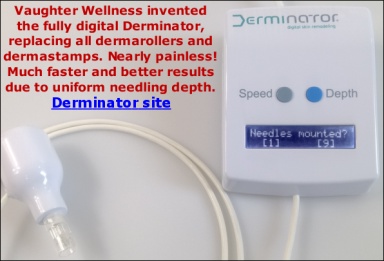The rolling speed is not relevant. You should not roll extremely fast though, for if a needle would be bent, you would do less damage if you were to roll slower.
Yes, as we write everywhere, in our instuctions, in our articles and here on the forum, six weeks is the absolute maximum when rolling with 2 mm needles. Any more rolling and you can do damage to your skin and you will interfere with proper regeneration. However on thick skin on the back, you can roll once a month with that needle length.
I don't understand what you mean by "these needles are thick".. Perhaps you meant long? They are not thick, they are 0.25 mm thick - the perfect thickness for micro-needling, as explained in a recent forum posting. There is a dermaroller vendor aggressively advertising that every other roller's needles are too thick, but in fact it's a marketing gimmick and by having a roller with thinner needles, they hope to capture a significant chunk of the market. Thinner needles than 0.25 mm simply won't have much of an effect. 0.25 is what the plastic surgeons use, and they pay a small fortune for their rollers, being able to use any roller they like. They like 0.25 mm.
It takes approx. three months for the skin healing process to be fully completed. It is possible and even extremely likely that those people who now say that 0.25 mm needles are "too thick", that they have been following the downright irresponsible advice to roll much more often with a 1.5 mm roller. We get emails nowadays from people that rolled with 1.5 mm every day and their skin is in a state of permanent inflammation. A roller´s needles have a conic shape. The thickest part is 0.25 mm and the tip is the thinnest. Please follow our advice - it's based on two years of medical literature research. Roll with exactly 0.25 mm thick needles. Not thinner, not thicker. Roll exactly as often as we say you should. Not more, not less :-)






